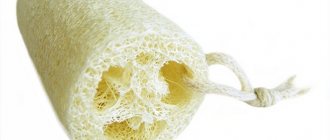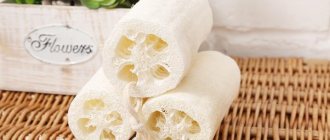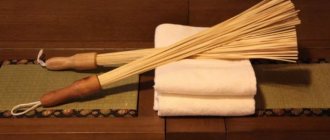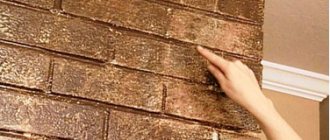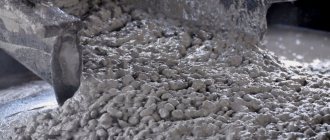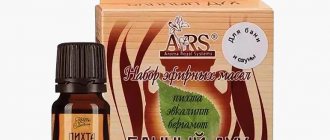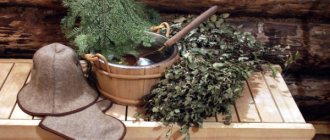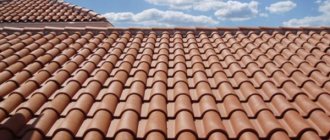Good afternoon, dear friends and guests of the site “I am a villager”! Today we’ll talk about the interesting loofah plant and its use in our daily lives. My interest in this plant arose not long ago, and this was due to the choice of a high-quality and environmentally friendly washcloth.
By the way, the word loofah should be written with two f, but people speak and write it with one, let it be in the folk way.
After looking through a bunch of different washcloths in the store, I decided on a loofah washcloth.
The seller turned out to be very sociable, and we talked for a long time about the types and forms of washcloths, we came to the conclusion that loofah, a natural product, and a washcloth made from it is also natural and brings benefits and purity to our body.
I was wondering if this is a plant, it means I can grow it myself and try to make my own natural washcloths.
Do you know that it is recommended to replace washcloths every 2-3 months, for those who like to go to the bathhouse, but in the shower it is advisable to renew the washcloth every month. Then you will have clean and silky skin without inflammation and irritation.
I found a lot of information on this topic and I found it interesting, I want to share it with you, my dear readers. Suddenly you, too, want to grow this unusual plant. Maybe some advice will come in handy when choosing washcloths. Let's get started.
Beneficial features
The loofah plant is a genus of herbaceous vines in the Cucurbitaceae family.
Naturally grows in the regions of Asia and Africa. Is it possible to grow this plant here in Russia? Of course you can, it grows very well in the southern regions by sowing seeds in the ground. In our Volga-Vyatka region and central Russia, loofah is grown using seedlings. But more on that later. Loofah, an annual beautiful and branched plant - liana. The shoots reach a length of 5 meters. The fruits grow up to 70 cm long. It can decorate and shade a gazebo, form a beautiful hedge, and you will get washcloths from its fruits and wonderful cosmetics from its stems and leaves. Young, unripe fruits are eaten, and folk medicinal potions are prepared from them.
Eating unripe fruits helps strengthen the immune system and helps fight flatulence and bloating, treat chest cough, and increase lactation in nursing mothers.
- We buy loofah seeds, there are a great variety of them, the “Cylindrical” variety is recommended, it is well suited for making washcloths.
- The technology for growing loofah is similar to growing cucumbers. It does not like replanting, is moisture-loving, and does not bear fruit well when planted thickly.
- We sow the seeds in separate peat cups from early March to mid-April; planting dates depend on your climate. In the Kirov region, we plant loofah seeds in early April.
- Make sure that the soil is always moist and the temperature before emergence is high, 25-30 degrees. When shoots appear, move the cups to a cooler place.
- Seedlings that have reached 40 days begin to harden. When the weather is warm and the nights are warm, they are planted in the ground on the south side.
- Loofah is very sensitive to soil; it loves and bears fruit well in loose, light and nutritious soil. Prepare the area for it in the fall, add humus and ash.
- We prepare a hole, pour humus into it and mix it with soil, transplant the seedlings carefully, without destroying the lump of earth where the roots are located. The root system of the loofah is superficial; it is recommended to immediately place a support for the plants, and as it grows, stretch the nets or guide the plant along a gazebo or a special arch.
- The distance between plants should be at least 1.5 meters; it grows very much, and when planted thickly, it does not produce a good harvest. When reaching 5 meters, the middle branch must be pinched, this will increase the yield.
- We feed the plant 1-2 times a month, add 1 liter of mullein and 0.5 liter of ash to a bucket of water.
- We don’t let the soil dry out, but we also don’t allow it to become waterlogged.
This is how you can grow this wonderful and beautiful loofah plant.
Moisturizing mask
This wonderful mask is suitable for all our skin, for the face and hands, heels and décolleté. Grind the loofah leaves and add a little honey, a few drops of olive oil and apply to the skin for 10 minutes. Rinse off with warm water and apply nourishing cream.
Lotion
Squeeze the juice from the young stems and leaves of the loofah and wipe your face and hands with it. It acts as a mild bleaching agent.
Use loofah sponges and sponges, they are good for removing makeup. Apply cleanser to a dampened sponge and wipe your face in a circular motion, then rinse with warm water.
This cleansing improves blood circulation and removes old cells, which helps even out skin color. When caring for your body skin, it is highly recommended to use a loofah sponge.
Loofah is used in making handmade soap; this plant is very popular among soap makers. Soap made from loofah has an exfoliating effect, which is very beneficial for our skin.
Today we met an amazing and useful loofah plant, try planting it in your garden and grow your own loofahs.
The site “I am a villager” wishes you good health and good mood!
Loofah seeds contain a huge amount of edible oil and protein. Luffa is included in many cosmetic products.
There are also vegetable and technical varieties of this plant. They differ in the quality of the oil obtained and in the scope of its use. Technical varieties are used to prepare loofah, and the oil obtained from the seeds is included in various face masks and other cosmetics. Food grades are used in cooking.
Not only the fruits and seeds of the plant, but also their green part have beneficial properties. For example, the juice from luffa stems in Japan is widely used to create lipstick or used as a lotion to cleanse the skin.
Before World War II, luffa (loofah) was used for industrial production. Due to its light and porous texture, it was used in various filters and diesel parts.
Also, due to good sound insulation and high strength, the fruits of the plant were used as an inner layer in the manufacture of steel helmets and automotive equipment for the US Army.
Many people are interested in such a plant as luffa. How to make a washcloth? To make a bath accessory, you first need to grow high-quality fruits.
Luffa leaves absorb a huge amount of moisture, so you need to carefully ensure that the soil does not dry out and the plant has constant access to the necessary nutrients. Water for irrigation must be warm, otherwise the luffa may die. Experienced gardeners also recommend spraying the vine itself once every two weeks or using a sprinkler.
As soon as the first mature ovaries are formed, you need to select 3-5 of the strongest ones, the rest need to be plucked out. In order for nutrients to reach the fruit, it is better to remove the side branches, the same applies to excess green mass.
Luffa, like any other plant, requires a large amount of oxygen, so the soil needs to be loosened three times a season, given the shallow root system, this procedure must be carried out very carefully.
Pollination - initially only female flowers are formed, male flowers begin to appear only after 10-12 days. Given the nature of the plant, it is almost impossible to pollinate it with the help of insects; the most reliable way is to use the manual method. It will be possible to find out whether the work was carried out successfully or not in a few days; the pollinated ovaries increase significantly in size.
Loofah for skin care
Moisturizing mask
This wonderful mask is suitable for all our skin, for the face and hands, heels and décolleté. Grind the loofah leaves and add a little honey, a few drops of olive oil and apply to the skin for 10 minutes. Rinse off with warm water and apply nourishing cream.
Lotion
Squeeze the juice from the young stems and leaves of the loofah and wipe your face and hands with it. It acts as a mild bleaching agent.
Use loofah sponges and sponges, they are good for removing makeup. Apply cleanser to a dampened sponge and wipe your face in a circular motion, then rinse with warm water.
This cleansing improves blood circulation and removes old cells, which helps even out skin color. When caring for your body skin, it is highly recommended to use a loofah sponge.
Loofah is used in making handmade soap; this plant is very popular among soap makers. Soap made from loofah has an exfoliating effect, which is very beneficial for our skin.
Today we met an amazing and useful loofah plant, try planting it in your garden and grow your own loofahs.
The site “I am a villager” wishes you good health and good mood!
If you liked the article, please share it with your friends, press the social network buttons. Write your comments, it is very interesting to know your opinion about the loofah and washcloths made from it.
Making loofah sponges
The very first advantage of this plant is that its ripe fruits make good washcloths, natural and strong. Medicine recommends the use of such washcloths. Using this washcloth, you will thoroughly cleanse the skin of old dead cells, it works like a good scrub, you will get an excellent muscle massage and clean, ruddy skin, and will reduce the appearance of “orange peel.”
Loofah fruits ripen late, in our area it will be in October; we remove the fruits before frost and place them in a well-ventilated, warm room to dry.
This process lasts several days and sometimes weeks. You can check whether the fruit is dry or not dry by taking it and shaking it; if the seeds inside roll and rustle, the fruit is ready for making a washcloth.
We soak the dried loofah fruit for several hours, it is recommended to boil water and let the fruits go there, boil for 10 minutes, this will make them easier to peel off.
Another tip, if you want a hard sponge, wait until the fruit is ripe, and if you want a gentle and soft sponge, remove the fruits when they are not ripe and put them to dry.
We peel the dried fruits from the skin, remove the remaining pulp and seeds, use an iron brush for this. Trim the fruit on both sides.
Wash in soapy water several times and dry. The environmentally friendly washcloth is ready!
And now you can dream up. The blank can be cut into any size, handles can be tied on, a massage mitt can be modeled, slippers can be made, you can even come up with different crafts. You can grow this amazing loofah fruit and make your own washcloths.
Before you use it, soak it in hot water for 2-3 minutes, you can rub it.
Despite its naturalness and excellent effect, it is advised not to use a loofah washcloth more than 2 times a week, especially for those with sensitive skin. Everything is good in moderation, use body cream after using a loofah washcloth.
After use, wash the washcloth well and dry it.
Making loofah sponges is a good way to earn money; you can grow several bushes - vines, harvest and make a lot of natural sponges. Agree with stores and sell. From 20 loofah bushes, with good care and proper placement, you can prepare up to 800 loofahs of different sizes.
Loofah washcloths are expensive, but the profit will be significant. Having gained experience, you can expand your production of washcloths and provide them to the entire area. This is a good cash addition to your budget.
Sharp-ribbed loofah (Luffa acutangula)
They are grown for their young unripe fruits, which are used as food. This variety is represented by an annual vine, reaching a length of 3-6 meters. The pentagonal stems have rough edges and are fixed to the support with the help of branched tendrils.
The leaf blades reach 20 cm in diameter, in most cases they are 5-7-angled or divided into several separate blades. The leaves are attached to the stem by means of fairly long petioles - about 8-12 cm each. All flowers of the plant are heterosexual and can have five 2-centimeter petals of pale yellow color.
Sharp-ribbed loofah (Luffa acutangula).
Staminate species form racemose inflorescences, 17-20 pieces each, while pistillate species are solitary and are found in the axils of the same leaves as the staminate ones. The fruits of the sharp-ribbed luffa are club-shaped and reach half a meter in length, with a diameter of 6-10 cm.
On a note! The flowers bloom only at night, so they are pollinated exclusively by nocturnal insects. The growing season for l. sharp-ribbed is quite short, and the species itself is undemanding to climate and soil, and is practically not susceptible to fungal diseases.
The taste of young specimens is reminiscent of cucumber, except that the pulp is sweeter. As soon as the fruits are completely dry, they are no longer suitable for food, but under the skin there remains a fibrous sponge created by intertwined conductive bundles. The seeds inside are ovoid and reach a centimeter in length. When ripe, the fruits are yellowish-black or completely black.
The green corrugated fruit dries completely after flowering and ripening.
Ripe fruits are unsuitable for eating because they have a strong bitterness. In cooking, other parts of the plant are also often used: buds, leaves, shoots and even flowers, and all that is needed to get a tasty side dish is simply stew them or season with oil.
How to use a luffa sponge?
One of the most specific representatives of the pumpkin family is the luffa. Many gardeners who are just starting to grow it on their plots want to know how to make a loofah from a plant. First you need to choose the right variety.
- Luffa sharp-ribbed - this subspecies of the plant is much easier to grow because it is less demanding on soil and care, and it is also less susceptible to various diseases. The flowers bloom at night, so they are pollinated by nocturnal insects or by hand. The fruits should be consumed before full ripeness, when their size is 30-40 centimeters, otherwise the taste of the product will change and be bitter. In its shape, luffa of this variety resembles a cone or club, the surface is ribbed, the skin is difficult to separate from the pulp.
The fruits are consumed in the same way as cucumbers. But at the same time they are included in curries and added to soups. The leaves, shoots and flowers of the plant are also edible; by simmering them for a few minutes and mixing them with oil, you can get an unusual and tasty side dish.
- Cylindrical luffa - this is the subspecies suitable for making loofahs. The length of the fruits can reach 70 centimeters, becoming slightly pointed towards the stalk. They are distinguished by thin skin, which is easy to separate, and delicate white pulp. According to the method of preparation, it is no different from sharp-ribbed luffa.
Before planting a luffa, you need to choose the right place in which the plant will feel as comfortable as possible:
- Luffa (loofah) does not tolerate strong winds.
- Loves sunlight.
- The plant can be planted both in a greenhouse and in open ground.
- Before planting, you need to take care of the support; it must be strong and strong, because the plant grows very quickly and gains weight. An example would be a trellis, stretched twine, or even a metal mesh fence.
Luffa is a loofah, the production of which begins with long-term drying of the fruit, usually lasting several weeks. To prepare the plant for the process, you need to trim the ends and get rid of the seeds. Then the future sponges are hung in a dry room, not allowing them to come into contact with each other, otherwise mechanical damage or wet spots may form, and the fruits will most likely rot.
The next step is soaking in boiling water. This procedure is necessary so that the skin of the fruit softens and is easier to remove.
As soon as the washcloth is almost ready, you need to clean its fibers from pulp and seeds with a stiff brush.
To prepare the sponge for use, you need to wash it in soapy water and dry it naturally by hanging it in a sunny area or placing it on a window.
To make the bath accessory convenient to use, it is cut to the required size and the handles are attached. You can also design the washcloth in the form of a scraper. To do this, the luffa is given an oval shape, one side is completely covered with fabric, to which a loop is attached in advance.
If the washcloth does not stretch in hot water and does not shrink in cold water, it means that the entire technology was performed correctly.
Before using such a sponge, you need to soften it a little by holding it in hot water for 2-3 minutes.
Luffa is a washcloth, reviews of which always remain at the highest level. But in order not to harm your body, but to bring a beneficial effect, you should not overdo it in use (no more than twice a week). Otherwise, irritation may appear on the body or skin breakdown may occur.
After each use of such a washcloth, you must use moisturizing creams or oils.
Luffa has the ability to remove dead skin cells, but after a month of use, the pores of the sponge become clogged and bacteria begin to multiply in them.
After each use, the washcloth must be thoroughly rinsed and dried.
Many countries in Asia and the East widely use luffa in folk medicine. A decoction of the roots and green parts of the plant is an excellent remedy for stopping internal bleeding; it is also used to treat sinuses.
Many cosmetologists recommend using luffa with homemade soap. Melted soap is poured into the holes that form after peeling the fruit from seeds and pulp and the resulting sponge is used as a scrub. This cosmetic product will perfectly cleanse the skin and stimulate blood circulation in small vessels.
One of the most beneficial fruits for the skin comes from a plant called luffa. The washcloth, the photo of which can be seen above, is an environmentally friendly product. With enough effort, you can grow it in your garden. In addition, the vines on which the fruits are formed have an unusual appearance, so they are often used in landscape design.
Types of luffa
For a long time, the loofah was classified as a member of the cucumber genus. Then it was separated into a separate genus of annual plants of the pumpkin family, which includes about 50 species. It came to Russia from the countries of the East (India, Japan, China, Iran, etc.), where it is still actively grown. Because of its love for warmth and sun, loofah grows well in the Caucasus, Crimea, Krasnodar Territory and Central Asia. But they also tame it in central Russia.
Two types of plants are cultivated as vegetables:
- Luffa cylindrica - cylindrical luffa.
- Luffa acutangula - sharp-ribbed luffa;
The first of them is distinguished by large cylindrical fruits (up to 70 cm in length and up to 15 cm in thickness), pointed near the stalk, and a love of warmth. But the second type is not so delicate and tolerates weather changes better. Its ribbed fruits are slightly smaller (up to 40–50 cm). The remaining species have such small fruits that it is impractical to grow them for practical purposes.
Growing seedlings
Many summer residents are wondering how to plant and grow luffa (loofah). The answer lies in the biological characteristics of this plant. It has a fairly long growing season, so the process usually begins with germination of seedlings.
- Since luffa seeds are very hard and covered with a thick shell, they need to be prepared for planting. To do this, about a week before work, they need to be placed in a very warm place, with an air temperature of at least 40 degrees.
- Then they need to be soaked in aloe juice for 20-30 minutes.
- You need to start growing seedlings in early April so that the fruits have time to ripen before the onset of winter cold.
- The soil must be nutritious and loose, in order to avoid the occurrence of bacterial diseases, it should be disinfected.
- The first shoots should appear 5-6 days after sowing.
- In order for the luffa (loofah) to receive as many nutrients as possible, when growing seedlings it needs to be watered twice with mullein diluted in water in a ratio of one to ten.
general characteristics
Few residents of northern latitudes are familiar with this amazing vine. Luffa is native to West Africa and North-West India. In nature you can find about 50 varieties of this plant. Like most tropical species, it can be successfully grown in the middle and even northern regions of Russia. To do this, it is enough to get acquainted with the planting and care techniques and, of course, try to follow everything carefully.
Morphological description
Luffa loofah is a herbaceous annual vine, the closest relative of our zucchini and cucumbers. The length of the whip-like stems with tendrils can reach 6 meters. The leaves are large (about 20 cm), palmate, sometimes there are vines with a whole edge of the leaf blade. The plant is dioecious; each specimen bears both pistillate (female) and staminate (male) flowers. Pistillate flowers are arranged singly, while staminate flowers are collected in small racemes. The flowers are quite large, often yellow in color, similar in shape to cucumber and pumpkin flowers.
In place of the female flower, an elongated fruit is formed, reaching 70 cm in length. The unripe fruit has tender white flesh under the skin. In its mature state, it acquires a reticulated fibrous structure, in the middle part of which oblong large seeds (about 1.5 cm) of black color ripen.
The root system is poorly developed and is located in the upper layers of the soil.
Properties and uses
The use of different parts of the loofah plant is based on the characteristics of its chemical composition and physical properties. Luffa has a wide range of uses, from cooking to military uniforms:
- The carotene content in the leaves of the plant is one and a half times higher than that of carrots or peppers. The young fruits have a wonderful taste and are prepared in the same way as zucchini and eaten raw. In addition, they are included in recipes for various soups, salads, and curry sauce. Other parts of the luffa are also used as a side dish, lightly stewed and seasoned with oil: buds, flowers, leaves and shoots.
- The green parts of luffa are rich in iron and vitamin C. The Japanese use luffa juice to make expensive lipsticks and cleansing lotions.
- The seeds contain about 40% protein and 45% edible oil. Luffa oil is used in cosmetology; it is included in various creams, masks and other products.
- The fibrous and porous structure of overripe fruits provides good noise insulation and filtration qualities. In the 20th century, the US Army used them in the manufacture of steel soldier helmets and armored vehicle bodies, as well as fuel filters for engines.
- Man has long learned to make washcloths from ripe luffa fruits. This natural helper has serious advantages over synthetic analogues. It perfectly cleanses and massages the skin, has an anti-cellulite effect and improves blood circulation.
- The luffa plant has also found use in folk medicine. Fruit porridge with rice helps cleanse the lungs and get rid of a lingering cough. The high fiber content helps intestinal function and is useful for bloating and flatulence. Dishes using luffa have an antipyretic effect and stimulate lactation. Homeopathic medicine uses the plant for rhinitis and various types of allergies. Decoctions of roots and stems have a hemostatic effect and are used for internal bleeding. Luffa juice is used in the treatment of conjunctivitis and anemia.
Titimaloid pedilanthus: home care and reproduction
Transplantation into open ground
After the issue with the location has been resolved, it is necessary to plant the plants themselves. If the luffa is placed in a greenhouse, then the optimal time will be the second half of May, and if open ground is chosen as a permanent place of growth, then all work should be postponed until the beginning of June.
Before planting, you need to prepare holes, the depth and width of which will be 30 centimeters. The distance between plants should be at least one meter.
In order for the luffa (loofah) to take root as best as possible in a new place, the soil must be fertilized:
- You need to pour half a bucket of humus into the bottom and add 2 tablespoons of potassium sulfate there.
- Or you can use half a glass of ash per plant.
The luffa needs to be deepened to the cotyledon leaves, then the roots are carefully dug in; it is very important not to damage them during planting.
Fertilizing
You can fertilize the plant using the following substances:
- Ammonium nitrate is used during planting, second and third loosening.
- The mullein solution must be mixed with water in a ratio of 1 to 10. Fertilizing is done during the period of ovary formation.
- Complex fertilizer - you can use 1 tablespoon of nitrophoska diluted in a bucket of water. This procedure is carried out in the middle of the growing season.
- Superphosphate extract - 1 tablespoon of the substance is diluted in a bucket of water. This feeding promotes the ripening of seeds and the best ripening of the fruit.
How to make a loofah from luffa?
Bath products made from loofah are a dried fruit, the pulp of which completely rots, leaving only hard, tightly intertwined threads. In this case, the rigidity of the sponge will depend on the degree of maturity of the fruit. The younger the plant, the softer the product will be.
For those who do not want to purchase washcloths in the store, we can advise you to grow loofah fruits yourself. To do this you need to buy seeds. The best variety is considered to be the seeds of the “Cylindrical Loofah”. This is what is most suitable for making bath sponges.
Follow these instructions for proper cultivation.
- Plant loofah seeds in separate containers - it does not tolerate transplants. It is best to do this in March-April, depending on the climate in your region.
- This is a moisture-loving plant. Therefore, it is necessary to ensure a warm and humid microclimate in the room where the containers with the planted seeds will be located.
- After sprouts have appeared in the cups, the loofah should be moved to a cooler place.
- 40 days after the sprouts appear, the plant can be transplanted into the ground. The distance between the stems should be at least 1.5 meters: loofahs do not bear fruit well when planted in dense areas.
- As the vines grow, make supports or an arch. Loofah grows quickly, reaching 5 meters in height.
- To increase yield, you need to pinch the middle branch of the plant.
You should not cut the loofah before October. But don’t wait for the first frost. After ripening, the fruits are cut and hung in a dry room. Drying should take about 10 days. And in order to check the readiness of the fruit, you need to shake it. If you can hear the rustling of seeds inside, it means you can remove the plant.
To make it you need:
- cut off the ends of the fruit;
- Boil the loofah in water for 10 minutes;
- remove the skin;
- clean the fruit from pulp and seeds using an iron brush;
- treat the peeled fruit in a soapy solution and let dry.
You can completely cover one side of the product with fabric and attach a loop to it.
Advantages and disadvantages of natural washcloths
Manufacturers offer us a large selection of a wide variety of natural washcloths, which differ in shape, size, material density, and structure. Some people make eco-scrubbers with their own hands. I, too, recently had this desire: I have jute at home, and I know how to knit)). But so far this has not come to fruition.
Why should you choose natural washcloths for your hygiene, what advantages do they have over synthetic ones:
- Act as an antiseptic
- Massage the skin, increase its tone
- Improve blood circulation
- Cleanses pores
- Do not cause allergies
- Freely pass air
- Smell good
- Pleasant to the touch
- Environmentally friendly: decomposes when disposed of
Eco-scrubbers, when used and cared for correctly, will help you say goodbye to visible skin problems and improve the appearance of your body. They will help you cheer up in the early morning and relax after a hard day.
At the same time, such products are difficult to maintain and in some respects are inferior to their artificial counterparts, namely:
- They don’t release water well and take a long time to dry.
- Harmful microorganisms quickly develop in them
- Short-lived (average service life is two to three months)
- Most materials are hard to the touch
- Most often they foam poorly
- More expensive than synthetic analogues
Such a list of disadvantages can be intimidating, but in fact the advantages outweigh, don’t they?
How to use a washcloth
By cutting the fruits before they are fully ripe, soft products are obtained. But a fully ripe loofah will be a hard sponge. Therefore, if you want to soften it, soak the washcloth for 2-3 minutes in hot water before use.
Despite the fact that this sponge is a hypoallergenic product, you should not use it too often. Experts recommend using loofah sponges no more than 2 times a week. Excessive cleansing of the skin leads to skin irritation and other negative consequences.
It is also important to monitor the intensity of the massage. Using a loofah sponge, gently and gently massage the problem areas in a circular motion for 30–40 seconds. And after completing the procedure, you need to lubricate the skin with cream, olive oil or softening milk.
Use of luffa in medicine
Many countries in Asia and the East widely use luffa in folk medicine. A decoction of the roots and green parts of the plant is an excellent remedy for stopping internal bleeding; it is also used to treat sinuses.
Many cosmetologists recommend using luffa with homemade soap. Melted soap is poured into the holes that form after peeling the fruit from seeds and pulp and the resulting sponge is used as a scrub. This cosmetic product will perfectly cleanse the skin and stimulate blood circulation in small vessels.
One of the most beneficial fruits for the skin comes from a plant called luffa. The washcloth, the photo of which can be seen above, is an environmentally friendly product. With enough effort, you can grow it in your garden. In addition, the vines on which the fruits are formed have an unusual appearance, so they are often used in landscape design.
